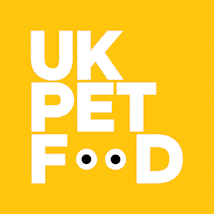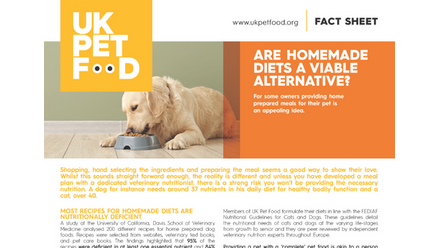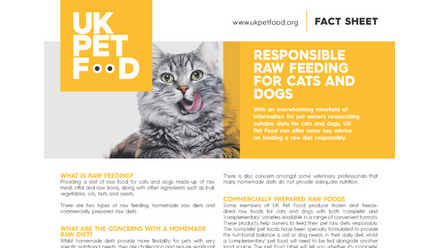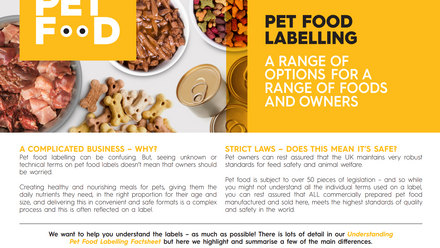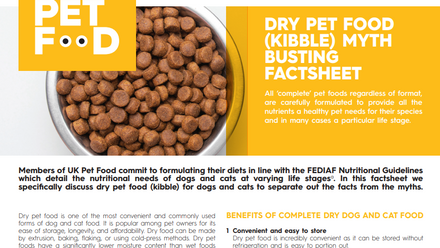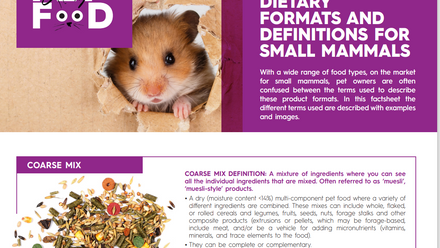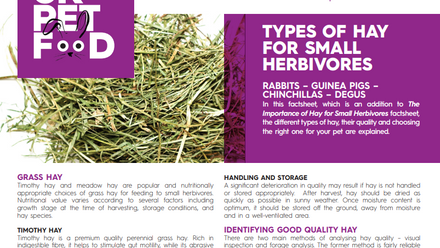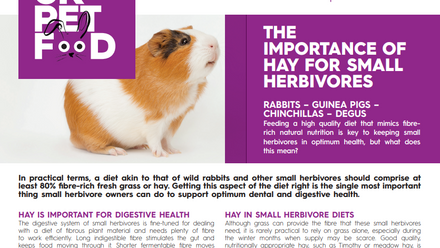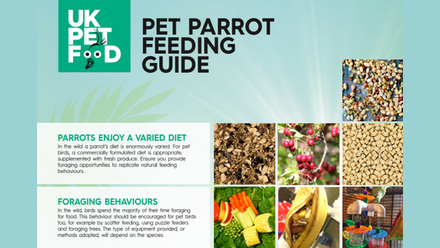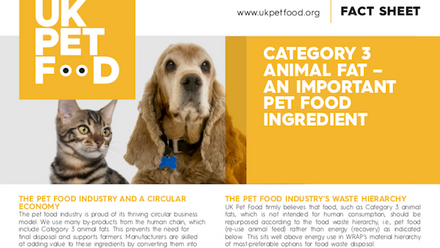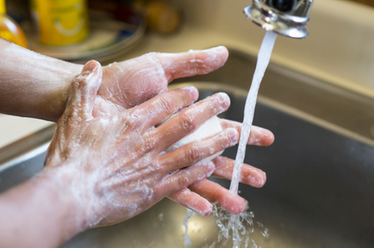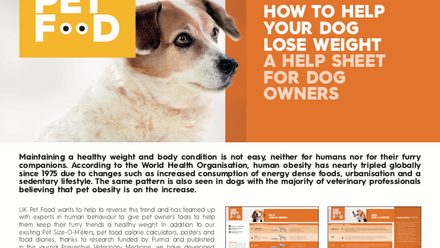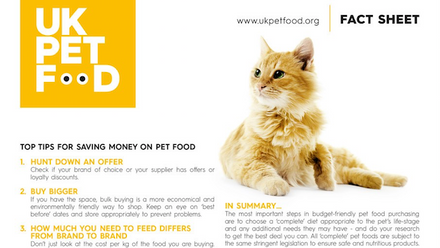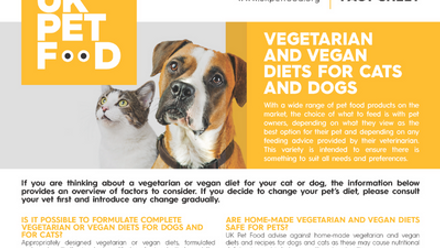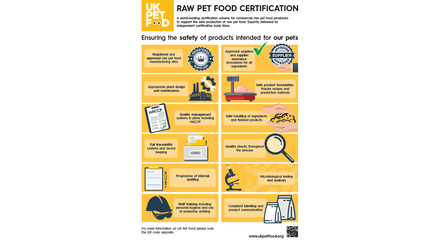Shopping Sustainably for Pet Food
Sustainability is now a key factor when we go about our business and our weekly food shop. Shopping for our pets and their food is no exception. We all want the best for our pets, and we are keen to feed them in a sustainable way.
It has also been proven that we are willing to pay for more sustainable products. A survey conducted by YouGov earlier this year confirmed that almost three in five (57%) grocery shoppers were willing to bear the additional expenses to buy products that are better for the environment. The survey highlighted that younger generations were increasingly likely to pay more with this figure rising to 69% for Gen Z (2000 or later) and 63% (1982-1999).
Considering these figures alongside a boom of young pet owners, the quest for sustainable food is only going in one direction and that is up!
UK Pet Food is the trade association representing most (over 90%) of the UK’s pet food producers. Our job is to advise our members and guide best practice. Great strides have already been made with the industry working collaboratively to improve sustainability, but the future looks exciting. We are using latest innovations wherever possible to minimise the depletion of resources while maximising pet food safety standards. There is a lot going on behind the scenes and being released onto the supermarket shelf.
Shopping Sustainably for Pet Food: Our Top Tips
First of all, note that WRAP (Circular Economy & Resource Efficiency Experts) research concluded that only 1% of pet food goes into waste. The figure is far higher for human food. However, with pet food, the topic of sustainability goes further than food and it’s packaging. It’s a multifactorial subject. There's a lot to consider:
1. How Sustainable Are The Ingredients?
When it comes to pet food ingredients, we are conscious of sourcing pet food ingredients responsibly and sustainably. Sustainable sourcing means ensuring to the best of our abilities that the ingredients we use have a positive impact on the local community and a limited impact on the ecosystems from which they are sourced.
Unused ingredients from the human food chain
Traditional pet food ingredients are renowned for being extremely sustainable and nutritious. Most ingredients are the unused ingredients from the human food chain. The animal-based ingredients come from animals, which are inspected by vets as fit for human consumption, but for a variety of reasons are not used in human food.
These are high quality and nutritious sustainable cuts of meat and organs that people usually don’t eat for instance offal (e.g., liver and tripe) and pig’s trotters. This also means that no animal is raised specifically for pet food. Plant based (grain and vegetable) by-products such as soy leftovers, broken rice and beet pulp are also used in pet food manufacture. The use of these unwanted ingredients also benefits the farmer by providing an outlet for what would otherwise be costly to dispose of.
Identifying new ingredients
As an industry, we are aware that as the squeeze on resources and food availability continues, we need to look at further solutions to minimise the environmental impact and as a result much research is going on to identify alternative food sources such as insect-based pet foods. You can read more about insect based pet foods on our website.
Only feed as much as needed
Widespread research has confirmed that the many of our pets are sadly overweight or obese and a key contributory factor is overfeeding. Pets are happier and healthier if fed the right amount of food and it is important to follow the guidelines on the pet food packet. Plus, adjustments may need to be made according to age, size, activity levels etc. Feeding the appropriate amount is also far more sustainable and there will inevitably be less waste and less of an impact on our environment. We have a range of tools to help owners who would like to manage their pet's weight.
2. How Recyclable Is The Packaging?
This is a more complex area and a focus for the industry. Pet food packaging is often the first thing a pet owner examines when purchasing a food. It details important factual information and plays a critical role in ensuring that the food is kept safe and retains its nutritional quality. We are balancing these packaging requirements with the need to be sustainable, with many manufacturers leading the change. You can read about some of our members' packaging initiatives here.
Packaging formats and plastic challenge
Pet food comes in a variety of formats and manufacturers carefully select the best option for packaging to ensure freshness, hygiene, and safety.
Currently, wet food pouch packaging is one of the most difficult challenges from a sustainability perspective. Pouches are tricky to recycle because they are made from thin layers of different materials. Whilst recent innovations have led to the development of 100% recyclable pouches, currently only 17% of UK councils collect and process this material. This is why the pet food industry actively supports the development of a well-functioning collection, sorting and recycling system in the UK.
UK Pet Food is proud to be a supporter of the UK Plastic Pact. The Pact brings together the entire plastics value chain together with the aim of eliminating problematic plastics by 2025.
3. What Are The Environmental Impacts Of The Manufacturing Process?
The exact impact of the manufacturing process is something that is hard to quantify for the industry and therefore even harder for pet owners!
However, owners can be reassured that the industry is working with partners to develop a system to measure the carbon footprint of pet food. In fact, the European pet food federation, FEDIAF, has developed the Product Environmental Footprint Category Rules (PEFCR) for pet food, which is endorsed by the European Commission. This gives clear guidelines for calculating the product environmental footprint of prepared pet food for cats and dogs.
Through FEDIAF, UK Pet Food will continue collaborating with the EU institutions to determine how this methodology can be used under future policy framework.
4. Is Animal Welfare Considered?
At UK Pet Food, our members are united in collaborating on this subject. The welfare of both farm and companion animals is fundamental to our work and we strive to safeguard high standards.
Through our collaborative work, we are promoting the welfare of animals and are contributing to a more sustainable future. We understand that animal welfare correlates closely with improved conservation, improved food safety and food security and improved wellbeing.
The pet food industry also works closely with many influential voices in the welfare sector to ensure animal welfare is a key consideration. For example, we are a co-sponsor of the All-Party Group for Animal Welfare (APGAW). We also work in partnership with the Canine Feline Sector Group and National Pet Month to provide education around healthy lifestyles for companion animals (beyond food and feeding). On our website, you can read more about our Animal Welfare Framework.
Summing Up Shopping Sustainably for Pet Food
In summary – watch this space or watch the pet food shelf! Things are moving fast. All members of UK Pet Food are working towards a much more sustainable future with an ultimate goal of a circular economy – where everything is used, and nothing wasted. However, maintaining the safety of pet food is important and research is underway into ingredients, packaging and processes. We suspect that the pet food shelf will look very different in ten years time!
Pet Nutrition Resources
UK Pet Food works with pet nutrition experts to develop informative factsheets, posters and other tools for pet owners to gain knowledge and understanding on key topics of pet nutrition. We share these with veterinary practices, welfare organisations and pet shops - to be shared with pet owners. You can read more
